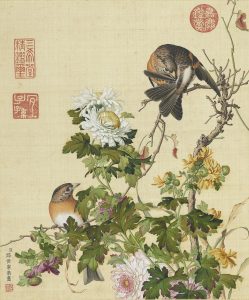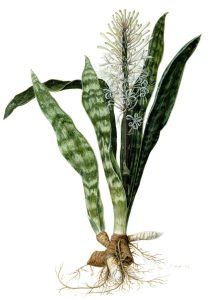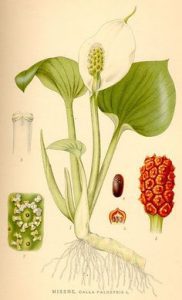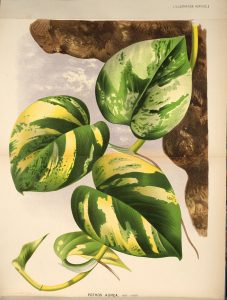Have you ever felt unwell for no apparent reason? You may be suffering from sick building syndrome (SBS), the result of poor indoor air quality.
The World Health Organisation reports 30% of buildings worldwide produce SBS. An alarming statistic made worse by the symptoms of headache; eye, nose and throat irritation; fatigue, dizziness and nausea.
Common chemicals found in our air at home
| Chemical | Health issues | Source |
| Formaldehyde | ☣️ Carcinogen | Forest fires, exhaust fumes, tobacco smoke
|
| Trichloroethylene ……….. | ☣️ Carcinogen ……………….. ……………….. . | Industrial solvent
|
| Xylene | ? Headache, dizziness, nausea and vomiting. | Plastic bottles, polyester, industrial solvent
|
| Toluene | ? Damages liver, kidneys, lungs | Paint thinner, super glue, explosive, 2003 Australian petrol scandal
|
| Ammonia | ? Coughing, nose and throat irritation | Fertiliser, cleaner, fermentation, solvent, tobacco smoke |
Pretty nasty chemicals to breathe at home let alone in space. That’s why NASA conducted a clean air study, pitching different species of plants in a Hunger Games style fight to the death… Ok, not quite that dramatic, but the results were as inspiring as Jennifer Lawrence herself.
Scientists found that certain plants feast on these harmful toxins (above) in the air as-well-as converting carbon dioxide into oxygen. One of these plants (below) per 10 square metres of space is enough to cause long-lasting positive effects. A further study discovered that micro-organisms in the soil remove benzene from the air.
Related article:Low maintenance plants for your new home
If you want to introduce your own plants, the secret is to buy species with big leaves and a long life. “The amount of leaf surface area influences the rate of air purification,” said Bill Wolverton, a former NASA research scientist who conducted that 1989 plant study. This is because when plants die, all the carbon in the plant is broken down by insects, fungi and microbes and re-released as CO₂.
Other than chemical benefits, plants are well documented to have psychological benefits such as calming the nervous system and reducing stress. Spending time around nature inspires a positive impact on a person’s mood and energy levels.
We’ve hand-picked NASA’s top 5 plants to purify your home.

| Florist’s daisy (Chrysanthemum morifolium) |
| Toxic to cats & dogs – yes |
| Other names – hardy garden mum |
One of the oldest forms of Chinese medicine, this beauty dates back to 500 BC. The flower was traditionally used against eye inflammation and ‘impure skin’. So significant this plant was, ancient civilisations used it in the quest for immortality.
Classic scriptures read: “In prolonged use, it lifts the inhibition of blood and qi, alleviates the body, slows down ageing, and prolongs life.”
Measuring 30 – 90 centimetres high, this plant blooms into wonderful multicolour flowers including green, white, yellow, pink and purple. Some varieties even look similar to daisies.
| Snake plant (Sansevieria trifasciata ‘Laurentii’) |
| Toxic to cats & dogs – yes |
| Other names – mother-in-law’s tongue |
Even the least horticultural folks will recognise the piercing tail of this snake plant native to tropical West Africa. They flow 70–90 centimetres and 5–6 centimetres wide upwards. Records have seen two-metre heights!
This really is a novice plant as it requires only the minimum of light and irregular watering. During winter you only need to water it every two months. Be careful though; it will quickly rot if overwatered.

| Parlour palm (Chamaedorea elegans) |
| Toxic to cats & dogs – no |
| Other names – parlour palm |
Translating to ‘gift’ in Greek, the parlour palm is one of the most heavily sold houseplants in the world. They’re native to rainforests in South America and versatile even with low maintenance.
It’s a slow-growing specimen, yet fans out to a whopping two metres given enough time. North Australians could benefit from this plant as it prefers medium to high humidity.

| Peace lily (Spathiphyllum) |
| Toxic to cats & dogs – yes |
| Other names – mauna loa |
Don’t be fooled by the name; although it’s called ‘lily’, it’s not part of the family Liliaceae which is highly poisonous. The effects of ingestion are mild. Do be fooled by the name; this popular flower is known to inspire peace in the eyes of the beholder.
The leathery leaves have enormous potential to grow up to 25cm wide and 65cm long. Native to Central America tropics and some parts of South East Asia, this is another species with low light and water needs.

| Devil’s ivy (Epipremnum aureum) |
| Toxic to cats & dogs – yes |
| Other names – devil’s ivy, pothos plant, golden pothos |
Another ‘evil’ plant by name; devil’s vine is notoriously impossible to kill and unlike most plants still glows (an evil) green when locked in the dark. If you don’t resort to an exorcism, this plant can prove pretty useful in fighting nasty toxins.
“I usually recommend the golden pothos as my first choice, since it is a popular plant and easy to grow,” added NASA scientist Bill Wolverton.
Hailing from French Polynesia, pathos is excellent for homes with indirect sunlight or even fluorescent lighting. It’s dubbed a ‘shy’ plant due to the flower only sprouting some years of its life or sometimes never.

